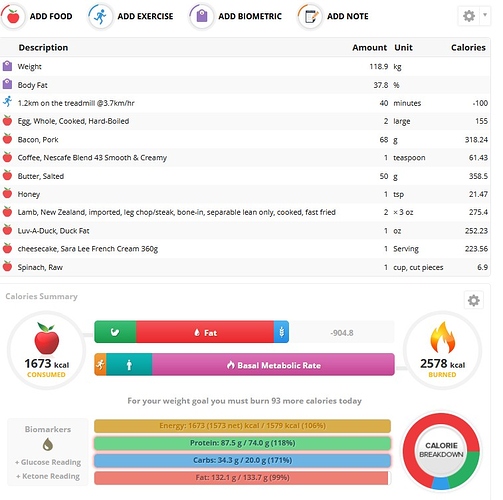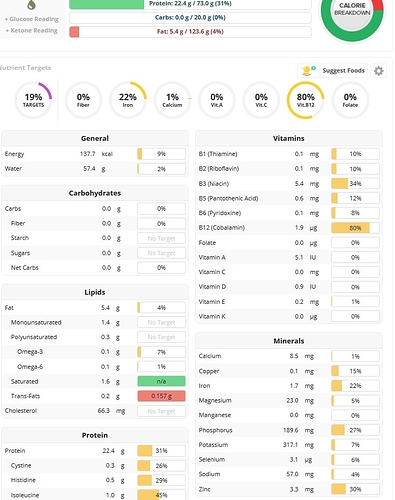I thought I’d start a thread on the Cronometer available here. I’ve been playing around with it putting in food items to see what the break down is on all types of food. One thing I noticed is that it gives you a value for kcals burned per day, I assume this is based on your weight, height and amount of exercise you do? Would I be correct in saying that this total is the recommended amount of total calories that your body would need to remain stable? i.e. no weight-loss or gain?
On the left side we see the total calories consumed in kcals. Do users of this application find it accurate? It looks pretty good to me, just wondering what other’s experience has been. I don’t use programs like this but it looks quite helpful if its accurate. I guess that depends on the quality of information that people enter for food like lamb chops.
That raises another question, if you are calculating the values of a lamb chop how do you not account for the bone that you don’t eat but is also included in the weight? is there a bit of guess work involved for things like that?








 )
)